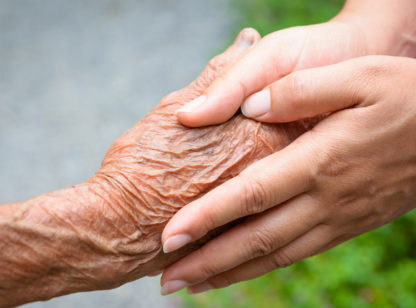What exactly is resonance? You may be familiar with a demonstration that features a vocalist singing a particular note where upon a crystal wine glass breaks into pieces. What actually happens is that the atoms in the glass begin vibrating at a frequency identical to the frequency of the note sung by the vocalist. This is resonance.
If you pluck the G string on a violin, the G string of another violin across the room will vibrate. If you place your finger on the string of the second violin and the first G string is plucked, the frequency is interrupted and will not vibrate.
In terms of resonance and the human body, every single cell, tissue and organ has a resonant frequency. The interruptions of frequencies cause the human body to experience pain and dysfunction, which can now be treated with frequency specific microcurrent (FSM).
The history of FSM began in 1997 when a list of frequencies was found in the drawer of an osteopath who sold his practice in 1946. Along with the frequencies was a single channel microcurrent made in 1922. The microcurrent unit currently used has an A and B channel. The A is for the condition and the B channel sends the frequency to the affected tissue.
Twenty-five years and 40,000 treatments later, Carolyn McMakin, DC, a Portland, Oregon chiropractor has developed resonance protocols utilizing the frequencies to treat numerous physical conditions. Forty-five protocols are available to treat a broad scope of conditions such as fibromyalgia, PTSD, musculo-skeletal pain and injuries along with somatic and visceral conditions. It is theorized that the when the frequency resonates with a particular tissue, cell signaling is changed and the pathology is neutralized.
FSM is conducted with graphite gloves wrapped in moist towels and placed on the area of injury. The patient rarely feels anything as the current is below 500 microamps. Treatment times vary from 10 minutes to two hours.
An important aspect of FSM therapy is correct diagnosis of the condition and tissue involved, requiring a thorough examination and patient history. The frequencies will only resonate with the exact condition and tissue at hand, as both must be specific to be effective. If the patient presents with muscle pain and inflammation, and the exact cause is coming from the nerve, the frequency for muscle tissue will not be effective; the frequency for the nerve must be substituted.
Of particular interest are the studies conducted by Dr. McMakin and addressed in her article, Non-pharmacologic Treatment of Shingles, where it was found that only one pair of frequencies can be used for shingles. That frequency, 230 hertz on Channel A and 430 on Channel B, does something to the virus to stop the pain and prevent the blisters from breaking out. If the blisters have already appeared, the frequencies stop the pain and the blisters dry up, disappearing within 24 – 48 hours.1
FSM works by increasing production of ATP, the major source of energy for all cellular reactions in the body. Because FSM can increase the amount of ATP by as much as 500 percent, treatment time is greatly reduced and recovery is much quicker.
Since 2003, the use of FSM has been well received by leading health institutes. Of particular interest is the work doctors from Children’s Hospital at the Cleveland Clinic are doing for children with cystic fibrosis. For some time, FSM therapy has been included in the rehabilitation of these children with much success.2
Also, a study was conducted at the Walter Reed pain clinic for three wounded warriors. FSM was applied resulting in more-rapid reduction of pain and associated symptoms, including memory problems, mental sluggishness and post-traumatic stress disorder.3
Many patients with ongoing FSM treatable conditions can continue treatment at home, when necessary, with a home unit programmed by the practitioner and updated as needed to reflect changes in condition. However, the protocols should be used as an adjunct following a proper medical evaluation by a qualified practitioner.
Betty McDonald is a licensed acupuncturist and functional medicine practitioner. She is owner of The Wellness Place and can be reached at (760) 766.6223. For more information visit www.BettyMcDonald.com.
References: 1) https://www.practicalpainmanagement.com/pain/neuropathic/postherpetic-neuralgia/non-pharmacologic-treatment-shingles; 2) https://my.clevelandclinic.org/-/scassets/files/org/pediatrics/inpatient-rehabilitation/childrens-rehab-modality-fact-sheet.ashx?la=en; 3) https://europepmc.org/article/MED/31297172










































Comments (0)